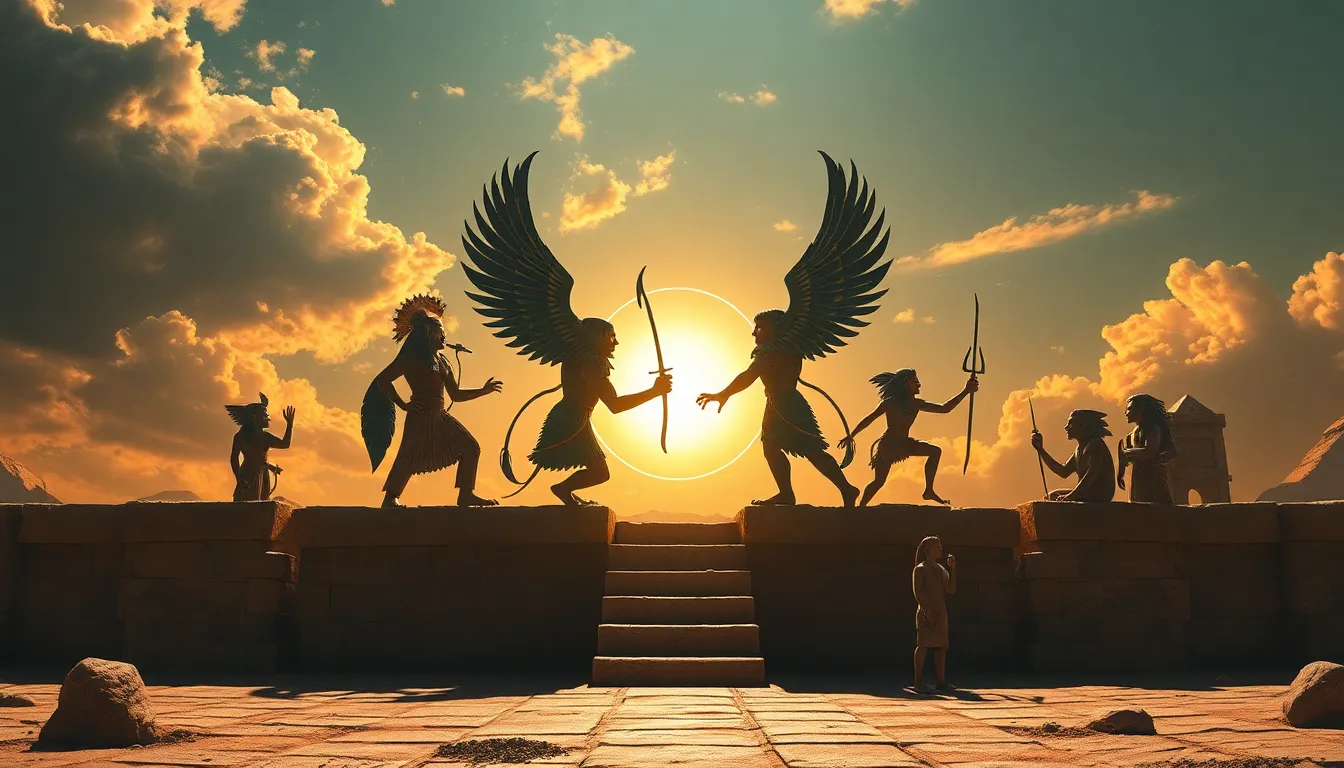The Eternal Cycle: Retribution and Rebirth in Egyptian Mythology
I. Introduction
Egyptian mythology is a rich tapestry of stories, gods, and beliefs that have shaped the culture and civilization of ancient Egypt for thousands of years. At the heart of this mythology lies the profound concepts of retribution and rebirth, which reflect the Egyptians’ understanding of life, death, and the nature of existence.
The importance of retribution and rebirth in Egyptian culture can be seen in their rituals, art, and societal values. These themes are interwoven into their understanding of the afterlife and the moral order that governs the universe. This article aims to explore these concepts in depth, examining key deities, rituals, and their influence on culture and art.
II. Key Deities in Egyptian Mythology
Central to the themes of retribution and rebirth are several key deities in Egyptian mythology:
- Osiris: The god of the afterlife and resurrection, Osiris represents the cycle of life, death, and rebirth. He is often depicted as a mummified king, symbolizing the promise of life after death.
- Isis: The goddess of magic and motherhood, Isis plays a crucial role in the resurrection of Osiris. Her nurturing and protective qualities embody the themes of regeneration and healing.
- Set: The god of chaos and retribution, Set is often portrayed as the antagonist in the Osiris myth. His actions lead to the death of Osiris, representing the darker aspects of life and the need for justice.
- Horus: The avenger and protector, Horus is the son of Osiris and Isis. He symbolizes divine kingship and the struggle against chaos, reflecting the ongoing battle for order and justice in the universe.
III. The Concept of Retribution
The concept of retribution in Egyptian mythology is deeply tied to the principle of Ma’at, which embodies order, truth, and justice. Ma’at was not just a moral concept, but a cosmic principle that maintained the balance of the universe.
One of the most significant rituals reflecting this concept is the weighing of the heart ceremony. In this ceremony, the heart of the deceased was weighed against the feather of Ma’at. If the heart was lighter or equal to the feather, the deceased was granted passage to the afterlife. If it was heavier, it was devoured by Ammit, the demoness, thus ensuring retribution for a life of wrongdoing.
The consequences of wrongdoing in the afterlife were severe, underlining the importance of living a life in harmony with Ma’at. This belief system reinforced moral behavior in society, as individuals aspired to avoid the chaos represented by Set.
IV. The Cycle of Life, Death, and Rebirth
The myth of Osiris serves as the cornerstone of the Egyptian understanding of death and resurrection. Osiris’s death at the hands of Set and his subsequent resurrection by Isis illustrates the belief that death is not the end but a necessary precursor to rebirth.
Additionally, the annual flooding of the Nile River is a natural phenomenon that reflects the cycle of life and death in Egyptian agriculture. This flooding was seen as a gift from the gods, providing fertile soil and ensuring the rebirth of crops each year. This cyclical pattern of nature mirrored the beliefs of the Egyptians regarding the afterlife and the continuous cycle of existence.
V. Symbolism of the Phoenix and the Scarab
In Egyptian mythology, several symbols represent the themes of rebirth and transformation:
- The Phoenix: This mythical bird symbolizes rebirth and renewal. According to legend, the Phoenix would burst into flames and be consumed, only to rise again from its ashes, embodying the eternal cycle of life and death.
- The Scarab Beetle: Representing regeneration and renewal, the scarab beetle is associated with the sun god Ra. It was believed that the scarab rolled the sun across the sky each day, symbolizing the idea of rebirth and the cyclical nature of life.
VI. Rituals and Practices Reflecting Retribution and Rebirth
Egyptian rituals and practices were steeped in the beliefs of retribution and rebirth. Funerary practices, such as mummification and the construction of elaborate tombs, were designed to ensure a safe passage to the afterlife and to honor the deceased.
One of the most significant festivals celebrating rebirth was Wepet-Renpet, or the “Opening of the Year.” This festival marked the beginning of the agricultural season and was a time of renewal and hope for the coming year. It celebrated the cyclical nature of life and the rebirth of the land.
The role of temples and priests in maintaining cosmic order was also crucial. Priests performed rituals to honor the gods, uphold Ma’at, and ensure the renewal of life and order in society. These practices were essential in reinforcing the connection between the divine and the mortal realm.
VII. Influence of Egyptian Mythology on Art and Literature
Egyptian mythology has had a profound influence on art and literature throughout history. Ancient art often depicted themes of retribution and rebirth, showcasing scenes from the Osiris myth, the weighing of the heart, and various deities associated with these concepts.
Myths and stories that illustrate these themes have been passed down through generations, influencing modern interpretations and adaptations in literature and popular culture. The enduring nature of these stories highlights their significance and the universal appeal of the themes of justice and renewal.
VIII. Conclusion
The lasting legacy of retribution and rebirth in Egyptian culture can still be felt today. These concepts resonate with contemporary audiences, reminding us of the importance of justice, moral integrity, and the cyclical nature of life.
Understanding these themes in a historical context allows for a deeper appreciation of the rich tapestry of Egyptian mythology and its influence on civilization. The eternal cycle of retribution and rebirth continues to inspire and provoke thought about our own lives and the world around us.




